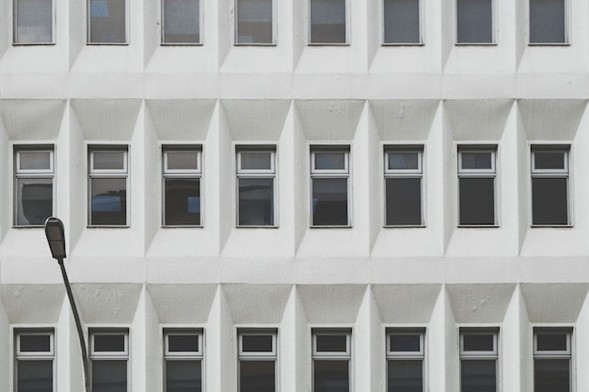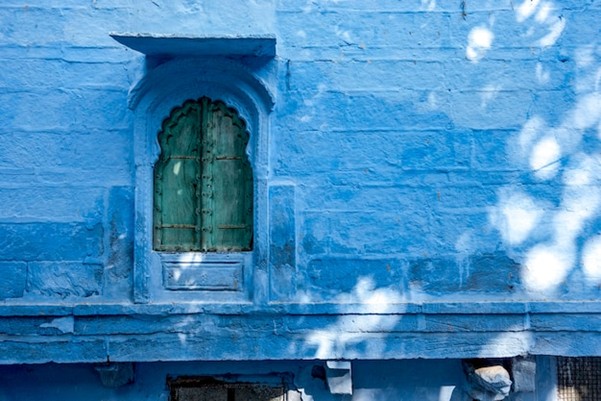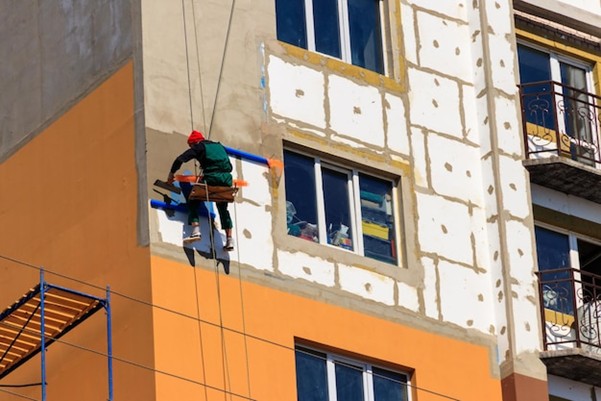"Urban renewal is not only about rebuilding infrastructure but also about giving people a sense of ownership and pride. A colourful, well-maintained neighbourhood reflects the community’s spirit."– Raj Rewal, Architect.
Raj Rewal emphasises the role of aesthetics in community building. Through residential painting, a neighbourhood’s visual appeal can be a powerful tool for fostering a positive relationship between residents and their environment. It’s not just about beauty; it’s about identity and ownership.
Residential painting is vital in urban renewal projects, especially in transforming old, neglected neighbourhoods into vibrant, thriving areas. Strategic residential painting can raise any neighbourhood’s creative appeal, promote community pride, and contribute to the overall triumph of urban renewal efforts. In India, where rapid urbanisation is often accompanied by neglected buildings and overcrowded spaces, residential painting becomes a fundamental tool in revitalizing these areas.

1. Aesthetic Transformation
One of the most immediate and visible impacts of residential painting is the aesthetic improvement of a neighbourhood. In urban renewal, transforming dull, grey, or ageing buildings into colourful, well-maintained structures gives a fresh, modern look. Vibrant colours can change the perception of a place, making it appear cleaner, safer, and more welcoming.
"Colour in architecture is not just about aesthetics; it’s a language that speaks to the people who live in the space. It can transform a place and give it a unique identity, making residents feel connected to their surroundings." – Ratan Batliboi, Architect and Urban Planner.
Example: Ahmedabad, Gujarat: In Ahmedabad’s Pol areas, a historical neighbourhood, residential painting has played a key role in reviving old buildings. The buildings were painted with both, traditional (natural earthy tones, likes shades of terracotta & brown) and modern colour schemes (a palette of neutral tones like greys, whites, accented by pops of vibrant colours or metallic finishes), encouraging cultural heritage while enhancing the visual appeal. This initiative benefited local businesses attracting tourism and created a renewed sense of pride among the residents.
2. Boosting Community Pride and Identity
When neighbourhoods are painted with care and concern, it fosters a sense of ownership and honour among residents. People tend to take better care of their residence and surroundings when they feel proud of their environment. In some cases, painting projects can be community-driven, where residents collaborate to choose colours, themes, and designs, further strengthening communal bonds.
"A city's buildings are like its face, and just as a person takes pride in their appearance, so too does a neighbourhood. When a space is visually appealing, people feel pride in it, and this pride directly influences the social health of a community." – Bimal Patel, Architect and Urban Planner, CEPT University, Ahmedabad.
Example: In Pune, the Wada areas (traditional old buildings) were given a fresh coat of paint as part of a larger urban renewal project. The renewed beauty sparked a sense of ownership in the community, especially among the local artisans and shop owners. This community involvement in residential painting helped create a unique identity for the neighbourhood, reflecting the city’s blend of modernity and tradition. Its hands-on involvement sparked a renewed sense of pride and ownership within the community.
3. Preserving Cultural Heritage
Residential painting can also play a role in reinstating the cultural heritage of a neighbourhood. By using tried and tested techniques and incorporating hyper-local designs, one can highlight the unique history and culture of the region. This helps maintain the identity of the community while simultaneously modernizing its appearance.
"When we paint a building, we are not just applying colour. We are infusing life into the walls, creating an environment where people feel a sense of pride and belonging. It's about creating a sense of place." – Vishal K. Pandya, Architect and Urban Designer.
Example: Residential painting has been used strategically to preserve the traditional, pink-coloured buildings in Jaipur, Rajasthan, while enhancing them with contemporary elements. The aged havelis (mansions) and residential buildings were repainted using traditional hues, highlighting the city’s cultural identity and making it a UNESCO World Heritage site.

4. Kochi, Kerala – Fort Kochi
Fort Kochi has seen an ongoing urban renewal project focused on preserving its historic charm while encouraging modernisation. The city has implemented a painting and beautification initiative to brighten residential neighbourhoods and heritage zones. In Fort Kochi, residential painting showcases the area's rich cultural history while contributing to a modern urban renewal movement that aligns with tourism and economic growth.
"Beautiful living conditions are the foundation of a harmonious society. When homes are thoughtfully painted and maintained, it contributes not just to the appearance of the area, but to the quality of life for its residents." – Gita Balakrishnan, Urban Planner and Sociologist.
Impact: Vibrant colours and murals have been painted on residential buildings, blending traditional and modern elements. This project has enhanced the area's visual appeal, with its colourful facades and beautifully painted walls bringing attention to Kochi’s blend of Dutch, Portuguese, and British colonial architecture. The aesthetic improvements have attracted both tourists and locals, contributing to the city's reputation as a hub for art and culture.
5. Chandigarh – Sector 17
As one of India’s most planned cities, Chandigarh's Sector 17 is a commercial hub that also includes several residential societies. Recently, the city undertook a project to revamp residential buildings and public spaces, focusing on making the neighbourhood more visually appealing and welcoming. Chandigarh's urban renewal efforts highlight how residential painting, when combined with broader urban planning strategies, can transform neighbourhoods into more functional, beautiful, and commercially viable spaces.
"Colour is the silent architect of a community's identity. When thoughtfully applied to residential spaces, it creates a sense of harmony and pride, transforming an ordinary neighbourhood into one where residents feel invested in their environment." – Anita Nair, Urban Planner and Community Development Specialist.
Impact: Residential buildings in the area received a facelift with modern colours and designs that enhanced the appearance of the sector. In addition to the painting, landscaping, and infrastructure improvements were made, creating a more cohesive and pleasant environment. The project not only adds to the locality's sophistication but also encourages pride among residents while attracting business and tourism.



